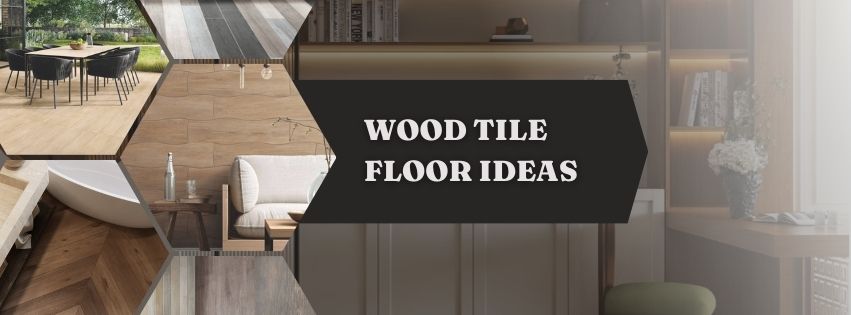Hello! I’m Rachel, your friendly ceramic and porcelain tile supplier from China. For over 15 years, I’ve helped clients worldwide find the perfect balance between beauty and practicality in their flooring choices. And time after time, I’ve seen how wood-look porcelain tiles deliver that perfect combination of elegance and durability.
If you’ve read my previous articles on Creative Wood Tile Patterns That Will Make Your Floors Stand Out and Porcelain Wood Tile Pros and Cons: A Supplier’s Insider Perspective, you already know about the incredible versatility and practical benefits these tiles offer. Today, I want to share specific wood tile floor ideas that will elevate your spaces with timeless elegance while providing the durability you need for real life.
In this article, you’ll discover ideas for different rooms in your home, color strategies that never go out of style, pattern recommendations that enhance durability, and special finishes that deliver both beauty and performance. Let’s explore how to create floors that are both gorgeous and practical!
Understanding the Balance: Elegance Meets Durability
What exactly makes a floor “elegant”? In my experience, elegant floors have a timeless quality—they look expensive and sophisticated without being flashy. They enhance a space without overwhelming it, creating a foundation that supports your overall design vision.
The beauty of wood-look porcelain tiles is that they bring the warmth and natural elegance of wood without the practical limitations. As I explained in my Porcelain Wood Tile Pros and Cons article, these tiles resist scratches, moisture, and wear in ways real wood simply cannot.
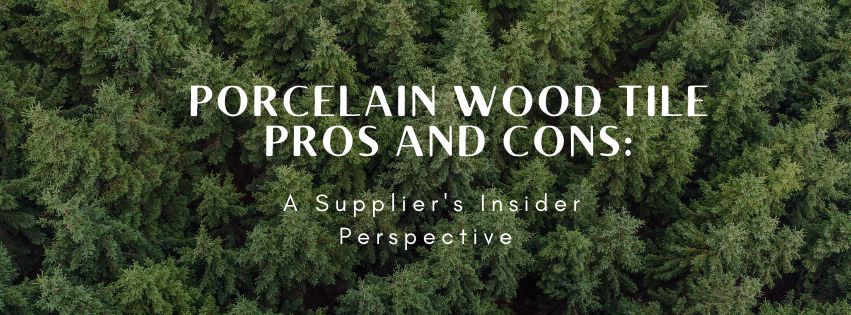

Finding the perfect balance between beauty and practicality doesn’t mean compromising on either. The best wood tile floors achieve both by combining:
- High-definition wood grain patterns that mimic nature
- Thoughtful installation patterns that enhance spaces
- Finishes that feel authentic while performing better than the real thing
- Color choices that complement your overall design
Let’s look at specific ways to achieve this balance in different spaces throughout your home.
Elegant Wood Tile Ideas for Different Home Spaces
Living Room Wood Tile Ideas
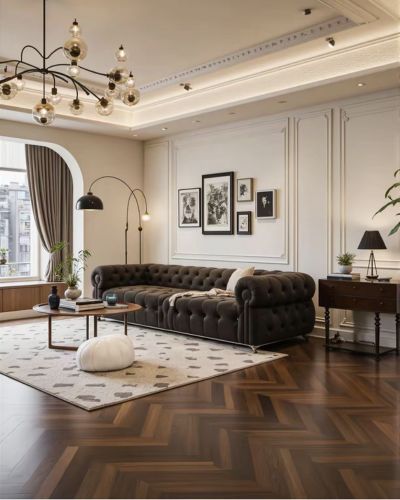

The living room is often the heart of the home, and your flooring sets the tone for the entire space. Here are some elegant wood tile ideas that work beautifully in living areas:
Large-format planks for open spaces: For spacious living rooms, consider extra-long planks (8″x48″ or even 12″x48″). These create fewer grout lines and more closely resemble high-end hardwood flooring.
Rich, mid-tone finishes: While trends come and go, medium brown wood tones with visible grain have enduring appeal. Look for tiles that mimic oak, walnut, or maple for a classic foundation that works with any design style.
Consistent flow: For open-concept homes, using the same wood tile throughout living spaces creates an elegant, cohesive look that makes the entire area feel larger. One of my clients in Toronto used the same wood tile throughout their first floor, creating a seamless flow that made their modest home feel much more spacious.
Layer with area rugs: Wood-look tiles provide the perfect foundation for gorgeous area rugs. Unlike carpet, the contrast between hard flooring and soft rug creates visual interest and defined conversation areas.
Kitchen Wood Tile Concepts
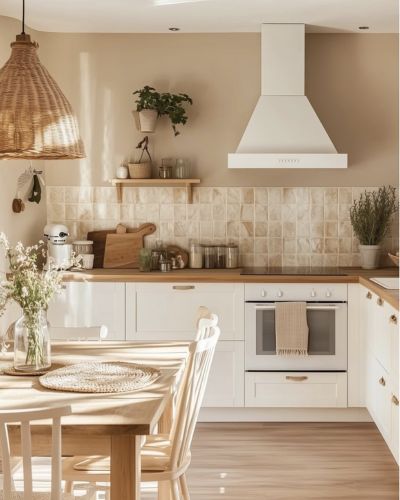

Kitchens demand flooring that can handle spills and heavy use while still looking beautiful. Here’s how to get the perfect balance:
Water-resistant elegance: Unlike real wood that can warp from spills, wood-look porcelain tiles handle kitchen messes with ease. For busy cooking spaces, consider tiles with slightly more texture for better slip resistance without sacrificing style.
Coordinating with cabinetry: For a harmonious look, choose wood tiles in a color that complements rather than matches your cabinets. For example, pair light cabinets with medium-tone floors for subtle contrast, or create dramatic impact with dark floors against white cabinetry.
Directional installation: The way you lay your tiles can enhance your kitchen’s proportions. For galley kitchens, install planks parallel to the length to visually elongate the space. In square kitchens, consider a herringbone pattern to add visual interest.
Practical luxury: For kitchens, I often recommend 6″x24″ or 8″x36″ planks. They’re large enough to show beautiful wood grain but more manageable for installation around cabinets and appliances.
Bathroom Wood Tile Transformations
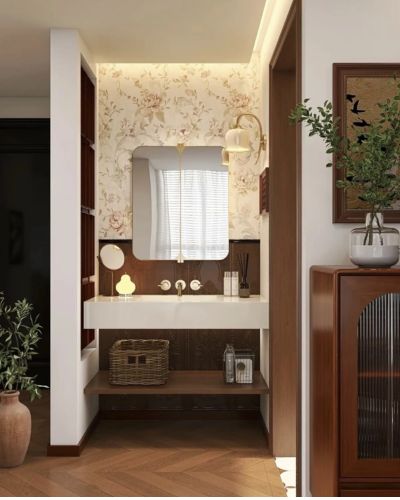

Bathrooms present unique challenges, but wood-look tiles can create spa-like elegance with none of the practical concerns of real wood:
Continuous visual flow: Extend the same wood tile from the floor up to the shower walls for a luxurious, seamless look. This creates a sense of spaciousness even in smaller bathrooms.
Safe, non-slip options: For bathroom floors, choose wood tiles with texture or matte finishes that provide traction when wet. Many manufacturers offer special grip finishes specifically for bathroom applications.
Subtle luxury: In powder rooms and guest baths, consider more distinctive wood looks like ash, ebony, or weathered driftwood. These smaller spaces are perfect for making a design statement without overwhelming your overall home aesthetic.
Mix with marble: For a truly elegant look, combine wood-look tiles with marble-look tiles in the shower or on accent walls. This pairing creates a sophisticated spa feel that elevates the entire space.
Bedroom Wood Tile Applications
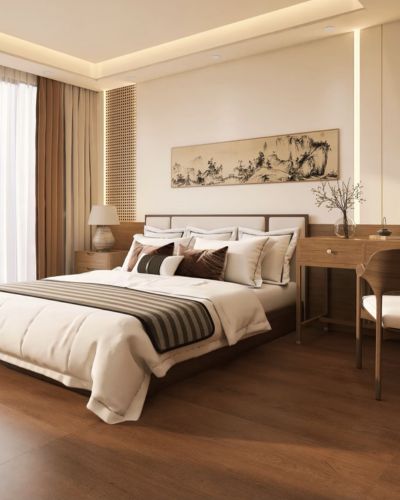

Bedrooms benefit from the warmth wood brings while gaining practical advantages over carpeting:
Creating warmth and comfort: For bedrooms, consider adding radiant heating beneath wood-look tiles. This creates a warm, cozy feel underfoot that carpeting can’t match, especially in colder climates.
Lighter tones for restful environments: Soft, natural wood tones like light oak, maple, or ash create a serene backdrop perfect for bedrooms. These lighter finishes also make smaller bedrooms feel more spacious.
Subtle patterns: In bedroom installations, consider gentle patterns like a 33% offset (where each row is offset by one-third of a tile) rather than bold geometric layouts. This creates visual interest without sacrificing the calm feel that bedrooms need.
Area rug integration: Position the bed on a large area rug that extends beyond the sides, creating a soft landing pad while showcasing the beautiful wood tile surround.
Elegant Installation Patterns That Enhance Durability
Classic Patterns with Modern Benefits
As I covered extensively in my Creative Wood Tile Patterns article, the way you arrange your tiles can dramatically impact both appearance and performance:
Herringbone for high-traffic entryways: The intricate angles of herringbone patterns naturally disguise dirt and wear, making them perfect for entryways and hallways. Their classic elegance has remained popular for centuries for good reason!
Diagonal layouts for visual expansion: Installing wood tiles at a 45-degree angle to the walls makes spaces feel larger and more dynamic. This layout also distributes wear more evenly than straight installations, extending the life of your floors.
Versailles pattern for formal spaces: This ornate pattern featuring squares and rectangles in a repeating geometric design brings old-world elegance to formal dining rooms and living areas. Its complexity also excellently hides any potential future damage.
Mixed-width installations for natural appearance: Combining planks of different widths creates a more authentic wood look while distributing traffic patterns more randomly across the floor.
Mixed Material Designs
For truly distinctive floors that offer both beauty and enhanced durability, consider these mixed-material approaches:
Wood tile with stone borders: Creating borders in more durable stone-look tile around the perimeter of wood-look tile installations protects the edges where damage often occurs first.
Decorative transitions: Between rooms with different functions, consider decorative transition strips or borders that not only look elegant but protect the edges of your wood tile installation.
Inset “rugs”: Create permanent “area rugs” using decorative tiles inset within a wood tile surround. These can define seating areas in large rooms while adding artistic elements to your floors.
Color Strategies for Timeless Elegance
Neutral Wood Tones That Endure
Some colors simply never go out of style, and this is particularly true for wood flooring:
Medium brown classics: Mid-tone brown wood looks like oak, maple, and walnut have remained consistently popular for decades. They hide dirt better than very light or dark options and coordinate with changing décor styles.
Warm vs. cool undertones: Consider your overall color palette when selecting wood tones. Floors with warm undertones (red, orange, yellow) create a cozy, traditional feel, while cool undertones (gray, blue) feel more contemporary.
Natural color variation: The most elegant wood-look tiles include subtle color variations within each plank, mimicking the natural variation in real wood. Avoid options that look too uniform or “printed.”
Coordinating with fixed elements: Choose wood tones that complement permanent elements like stone countertops, fireplace surrounds, and architectural details.
Dark Wood Tile Elegance
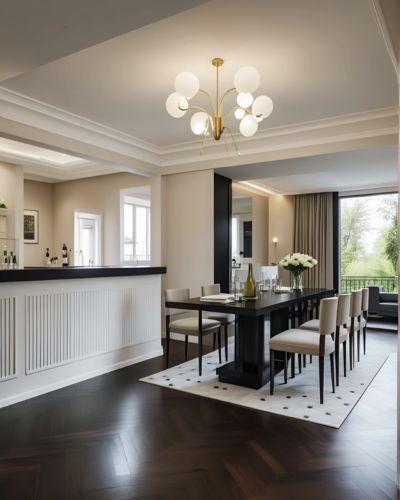

Dark wood-look tiles create a sophisticated, dramatic foundation:
Rich chocolate and espresso tones: These create a luxurious backdrop that makes lighter furniture and rugs pop. I’ve supplied these for numerous high-end boutiques and restaurants where drama is desired.
Space considerations: Dark floors work best in larger, well-lit spaces. In smaller rooms, limit dark wood tiles to accent areas or feature walls to avoid a cramped feeling.
Maintenance awareness: While porcelain wood tiles don’t show scratches like real dark wood, they do show dust and footprints more readily than lighter options. Consider this for high-traffic areas.
Perfect pairings: Dark wood tiles look stunning with brass or gold fixtures, cream upholstery, and bold accent colors.
Light Wood Tile Versatility
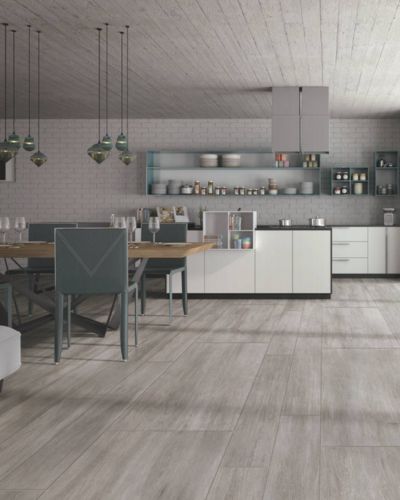

Light wood tones create airy, spacious-feeling environments:
Scandinavian-inspired minimalism: Pale oak, ash, and birch-look tiles create the perfect foundation for clean-lined, minimalist interiors.
Brightening effect: Light wood tiles reflect more light, making them perfect for smaller spaces, basements, or rooms with limited natural light.
Coastal and casual applications: Lighter wood tones evoke beachy, relaxed vibes, making them perfect for vacation properties or homes with casual lifestyles.
Dirt-hiding properties: Contrary to what you might expect, very light wood tones (especially those with some grain pattern) often hide everyday dust and dirt better than mid-tone floors.
Gray and Weathered Wood Trends
While relatively newer to the scene, gray and weathered wood looks have proven their staying power:
Modern farmhouse appeal: Weathered, grayish wood tones create the perfect foundation for the popular modern farmhouse aesthetic. These work beautifully with both modern and traditional elements.
Neutral foundation: Gray wood tones function as a neutral, working well with virtually any color palette from cool blues to warm terracottas.
Ageless appearance: Weathered-look tiles already appear aged, so they don’t show wear as obviously as pristine finishes might.
Commercial applications: I’ve found that gray wood tones are particularly popular in commercial settings like hotels and restaurants, where they hide wear while creating an upscale, contemporary atmosphere.
Special Finishes That Enhance Both Beauty and Performance
Textured Surfaces
Texture adds both visual interest and practical benefits:
Slip resistance advantages: Textured finishes provide better traction, making them ideal for bathrooms, kitchens, and outdoor areas. As I mentioned in my Porcelain Wood Tile Pros and Cons article, this can be a significant safety advantage.
Hand-scraped looks: These mimic the appearance of hand-finished hardwood, with gentle undulations that catch light beautifully while hiding minor imperfections that might develop over time.
Authentic feel: Higher-quality wood tiles have texture that perfectly aligns with the visible grain pattern, creating a much more realistic wood appearance.
Matte vs. Satin Finishes
The sheen level of your wood tiles dramatically impacts both appearance and performance:
Matte finishes: These provide the most natural wood look and hide small imperfections better than glossier options. They’re ideal for casual, rustic, or contemporary spaces and show less dust and footprints.
Satin finishes: With a subtle sheen, these create a more refined, formal look. They reflect a bit more light, which can brighten spaces, but may show more dust and smudges in busy areas.
Light reflection properties: In rooms with limited natural light, a slight sheen can help brighten the space. In rooms with lots of windows, matte finishes reduce glare.
Design compatibility: Traditional interiors often benefit from a bit of sheen, while modern and minimalist spaces typically look best with matte finishes.
Specialty Treatments
For truly unique floors, consider these specialty finish options:
Reactive glazes: These create unique color effects that mimic the look of reclaimed wood or wood that has naturally aged over decades.
Metallic accents: Some high-end wood tiles include subtle metallic elements within the grain lines, adding unexpected sparkle in certain lighting conditions.
Aged/reclaimed appearances: Tiles that mimic reclaimed barn wood or century-old flooring offer instant character and hide wear exceptionally well.
High-definition printing: The most realistic wood tiles use advanced printing technology that creates incredible depth and variation. While more expensive, these premium finishes offer the most authentic wood appearance possible.
Budget-Conscious Elegance: Getting the Look for Less
Creating elegant wood tile floors doesn’t have to break the bank. Here’s how to maximize value:
Value-tier options: As I mentioned in my Porcelain Wood Tile Pros and Cons article, standard-tier wood tiles often provide excellent value without sacrificing appearance. They may have slightly fewer pattern variations but still offer beautiful results.
Where to invest: Focus your budget on the tiles themselves rather than expensive installation patterns. A higher-quality tile in a simple layout often looks more elegant than a lower-quality tile in a complex pattern.
Maximizing impact: If budget is limited, use premium wood tiles in high-visibility areas (living room, entryway) and more affordable options in bedrooms or utility spaces.
Tile size economics: Medium-sized planks (6″x24″ or 7″x36″) often cost less than very large formats while still creating a beautiful, authentic wood look.
Long-term value: Remember that higher-quality tiles generally offer better long-term value through greater durability and timeless appearance. As I covered in my pros and cons article, the initial investment often pays off through decades of performance.
Trending Wood Tile Ideas for 2025
While elegance is timeless, it’s always good to know what’s current. Here are the wood tile trends I’m seeing for 2025:
Color trends: Rich mid-tone browns are making a comeback, replacing the gray tones that dominated the last decade. We’re also seeing increased interest in warm honey tones and natural-looking blonde woods.
Pattern preferences: Herringbone continues to gain popularity, especially in larger formats. We’re also seeing renewed interest in basket weave patterns and mixed-width installations.
Size trends: Extra-long planks (10″ or 12″ wide by 48″ or 60″ long) are the luxury standard for 2025, creating fewer grout lines and a more authentic hardwood appearance.
Finish innovations: Matte finishes with subtly aligned texture continue to dominate, with new manufacturing techniques creating ever-more-realistic wood grain textures.
Sustainable options: Eco-friendly manufacturing processes and recycled content are increasingly important to buyers. Many manufacturers now offer tiles made with reduced environmental impact, which I’m happy to source for environmentally conscious clients.
Conclusion
The perfect wood tile floor balances timeless elegance with practical durability, creating a foundation that enhances your space for years to come. By selecting the right colors, patterns, and finishes for your specific needs, you can create floors that are both beautiful and livable.
As a supplier who has worked with clients around the world, I’ve seen firsthand how wood-look porcelain tiles can transform ordinary spaces into extraordinary ones. They offer the warmth and elegance of wood with performance benefits that make them perfect for today’s busy lifestyles.
/creative-wood-tile-patternsI encourage you to explore the patterns I discussed in my Creative Wood Tile Patterns article and consider the practical aspects I covered in Porcelain Wood Tile Pros and Cons as you plan your project. The perfect balance of beauty and durability is achievable with the right information and materials.
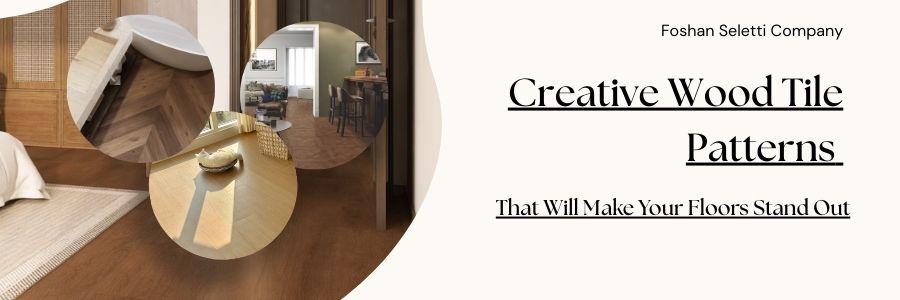

Ready to explore elegant wood tile options for your next project? Visit www.tilesandbathroom.com to know more about us, or contact me directly to discuss your specific needs. I’m passionate about helping clients find the perfect tiles that combine elegance with durability for any application.
Frequently Asked Questions
What wood tile color is most timeless?
Medium brown tones with natural-looking grain patterns have the most enduring appeal. Specifically, oak, walnut, and maple-inspired finishes have remained popular for decades and coordinate with virtually any design style.
Which rooms are best suited for wood-look tile?
Wood-look tiles work beautifully throughout the home but offer particular advantages in kitchens, bathrooms, basements, and entryways where real wood might be damaged by moisture or heavy traffic.
What installation pattern is best for small spaces?
For smaller rooms, diagonal layouts visually expand the space. Alternatively, larger planks with fewer grout lines installed parallel to the longest wall will make the room appear larger. For detailed pattern guidance, see my Creative Wood Tile Patterns article.
How do I choose between real hardwood and wood-look tile?
Consider your lifestyle, budget, and installation location. Wood-look tiles offer superior performance in wet areas, with pets, and for high-traffic zones. They’re also typically more cost-effective long-term. Real hardwood offers slightly more warmth underfoot but requires more maintenance. For more details about tile and hardwood Flooring, please see our previous article: Tile vs Wood Flooring: Pros, Cons, and Market Opportunities for Importers.
Can I install wood-look tiles outdoors?
Yes, but you must select tiles specifically rated for outdoor use. These have special properties to withstand freeze-thaw cycles and direct sun exposure. For patios, pool decks, and other outdoor spaces, look for tiles with a slip-resistant texture and proper outdoor rating.

